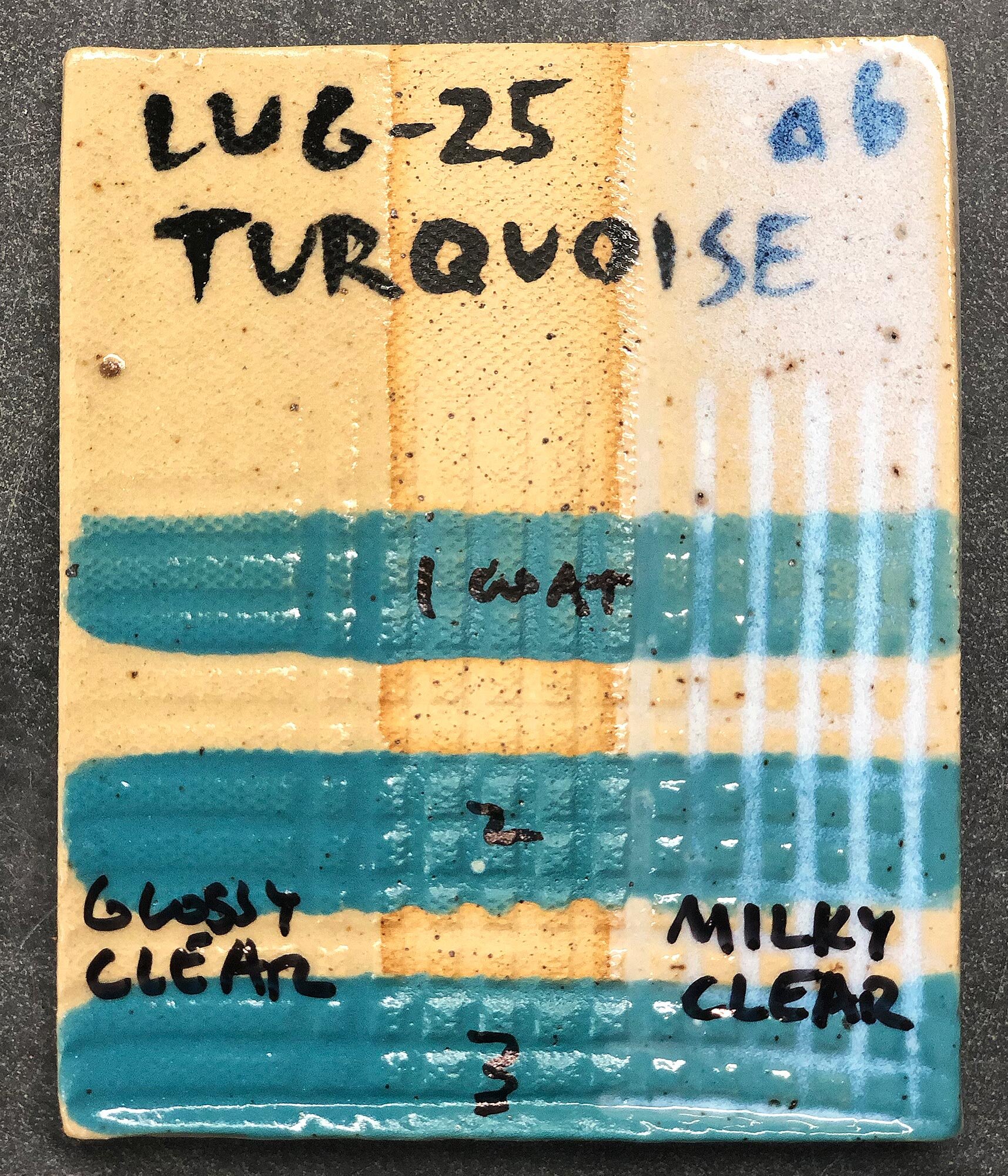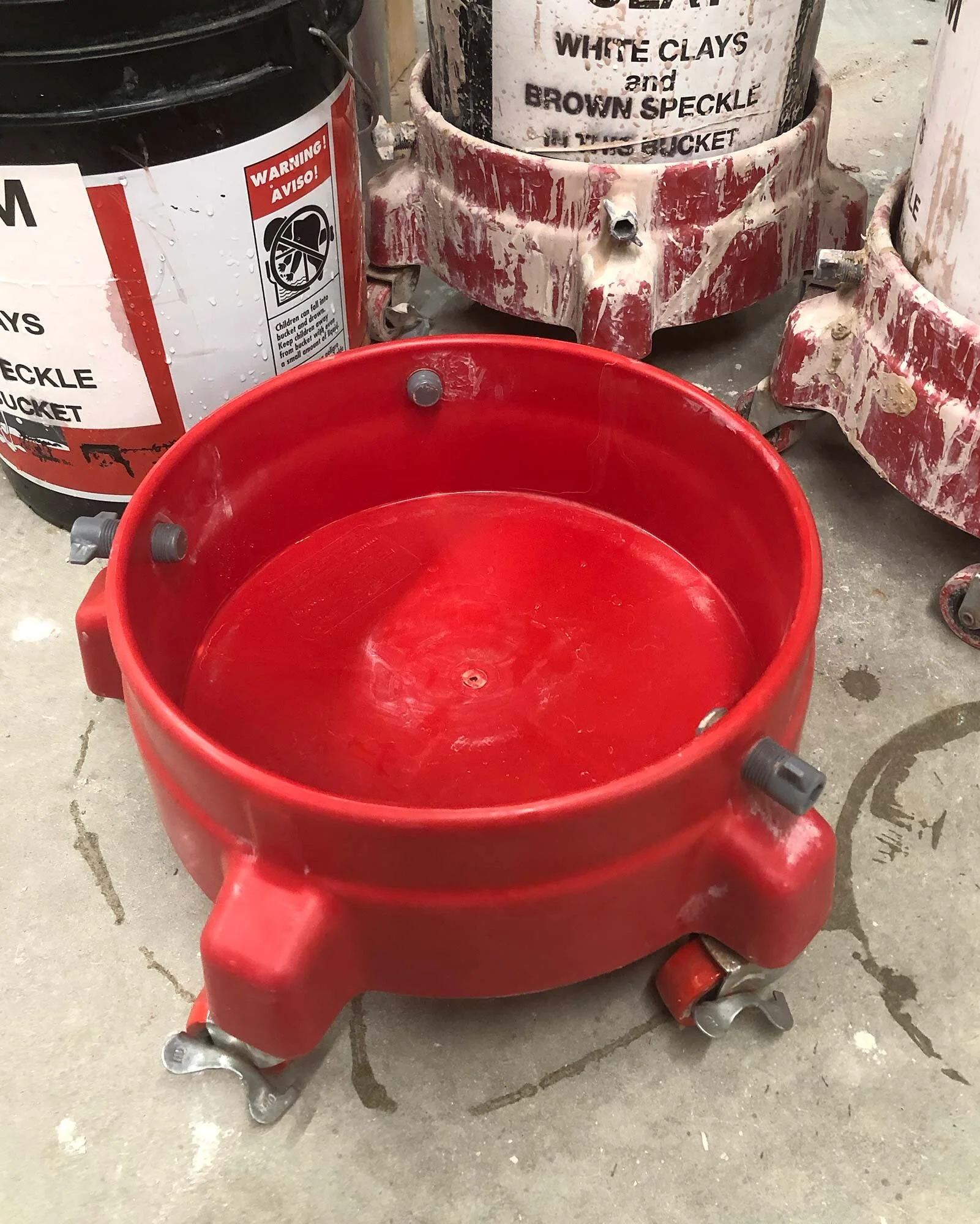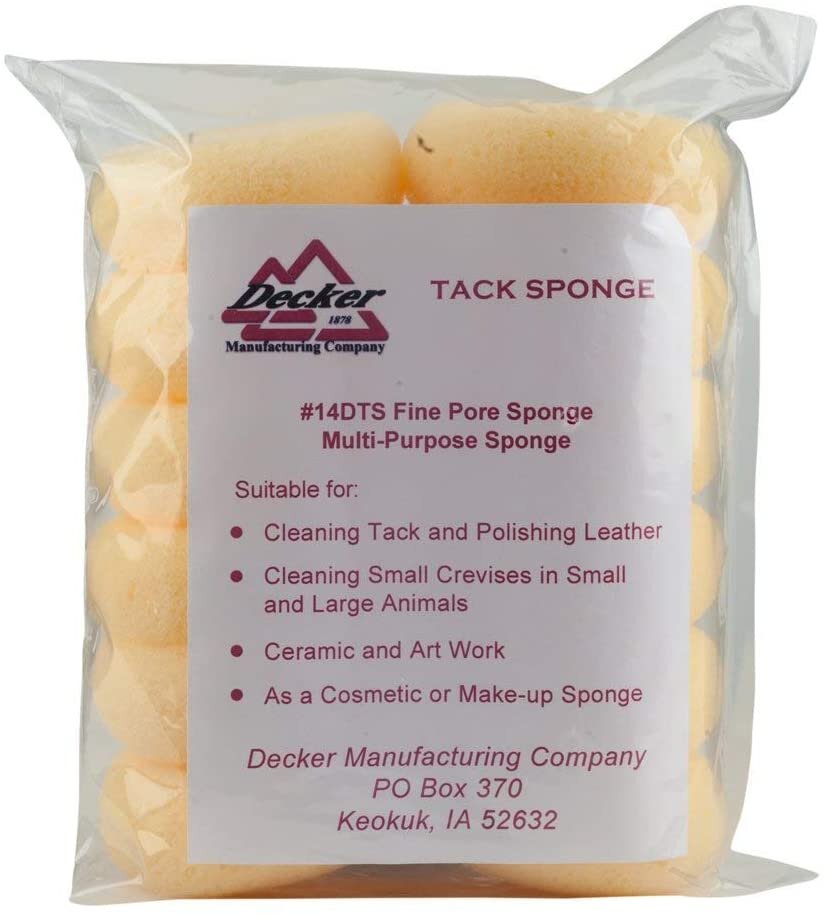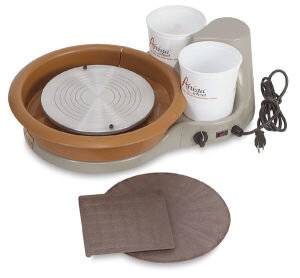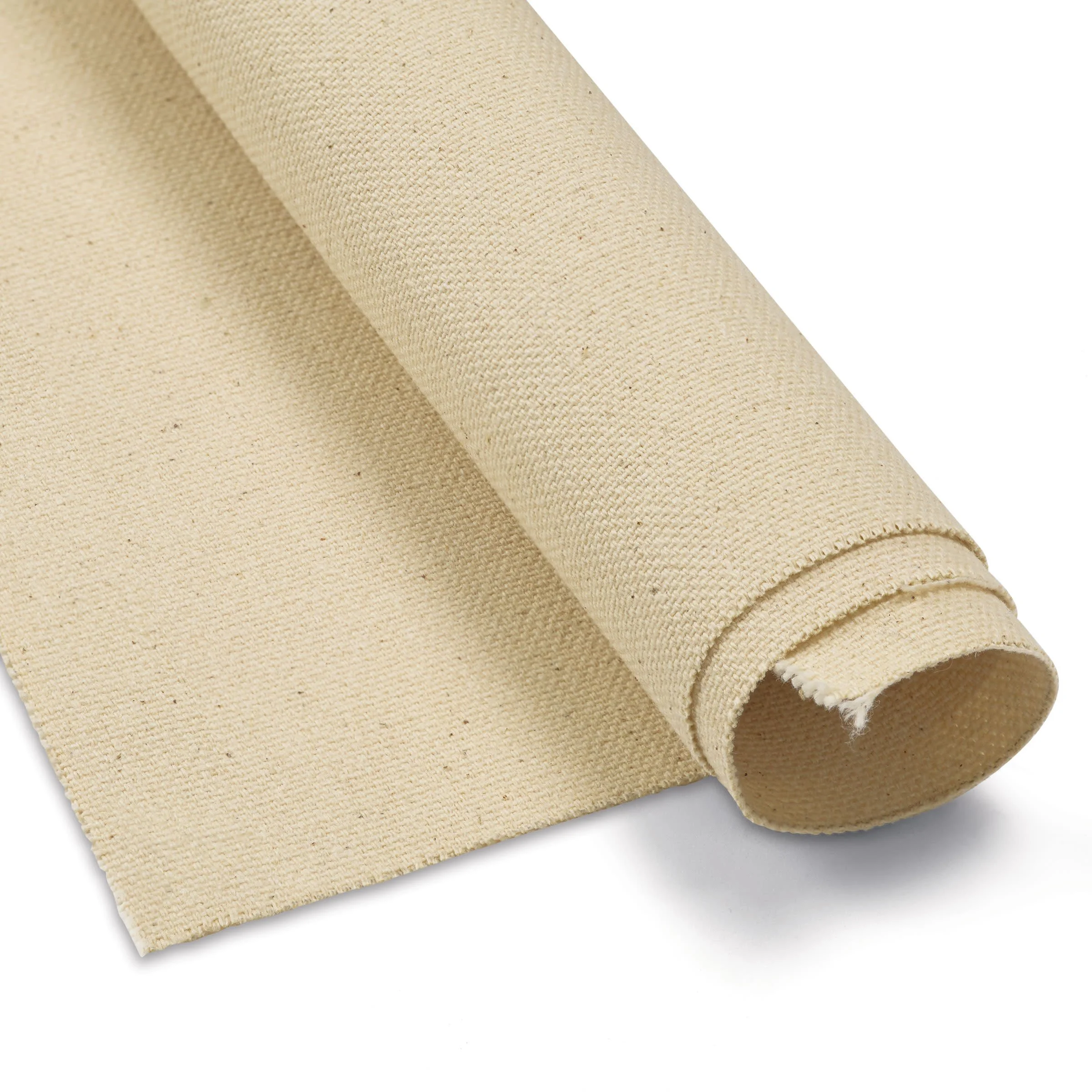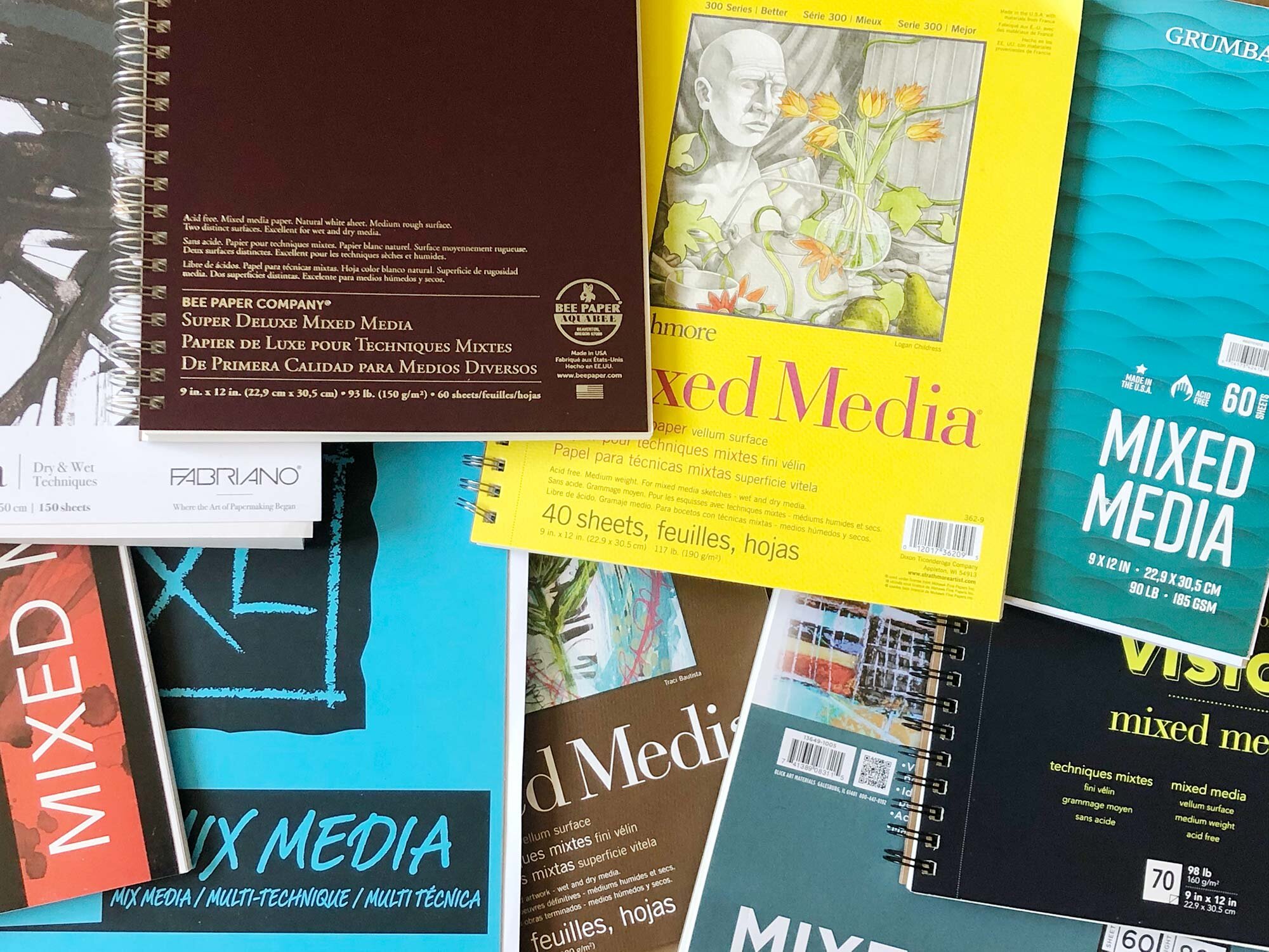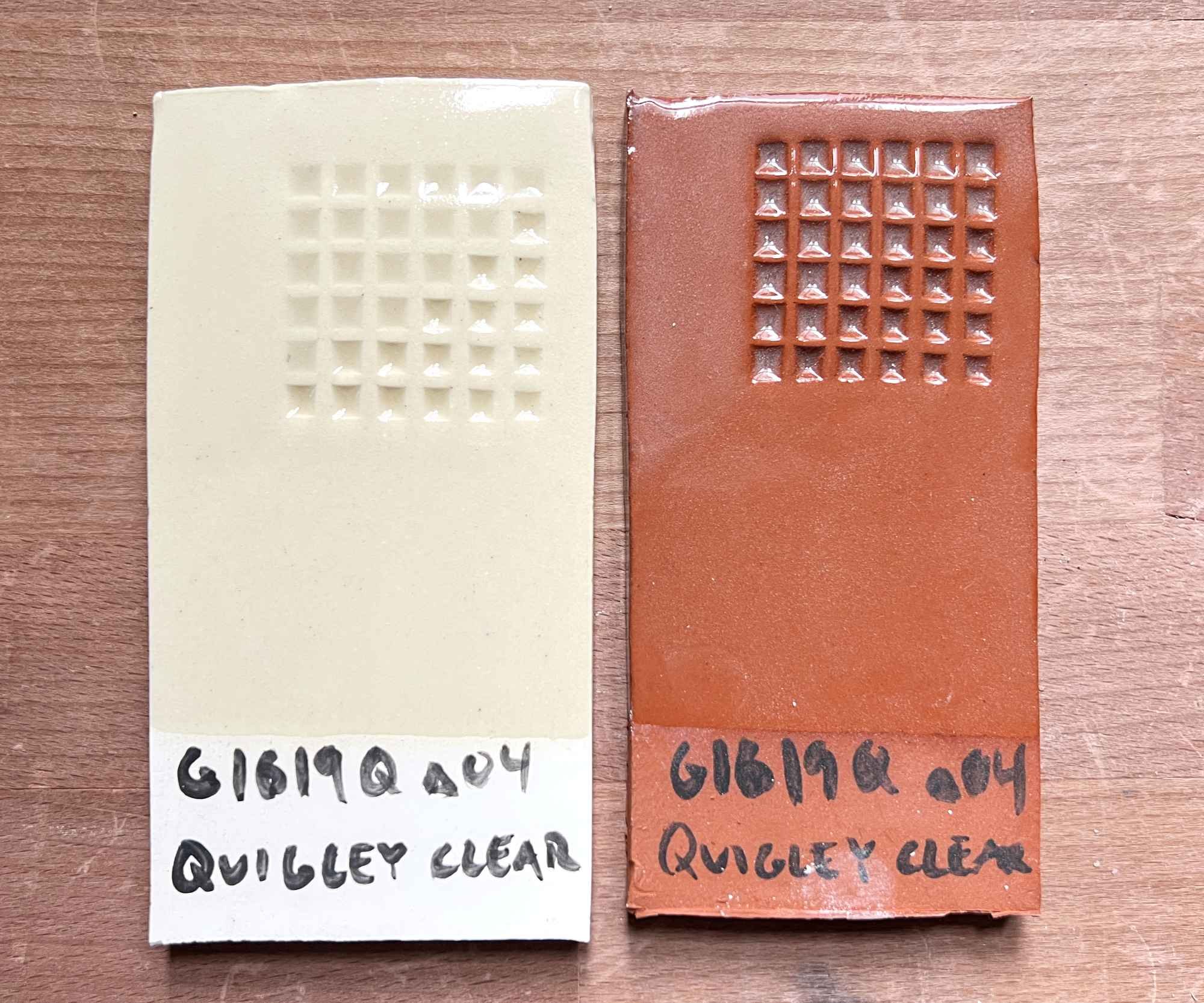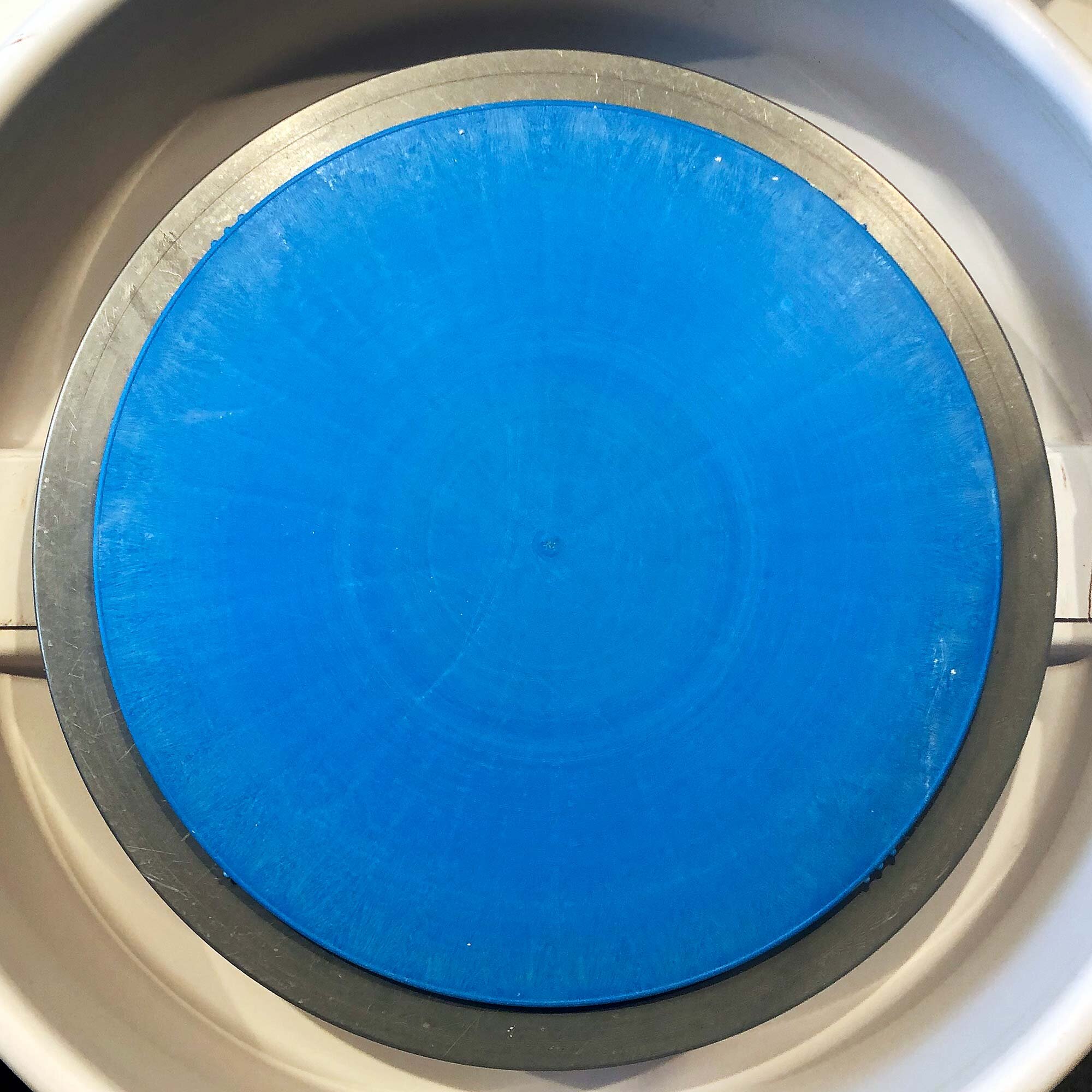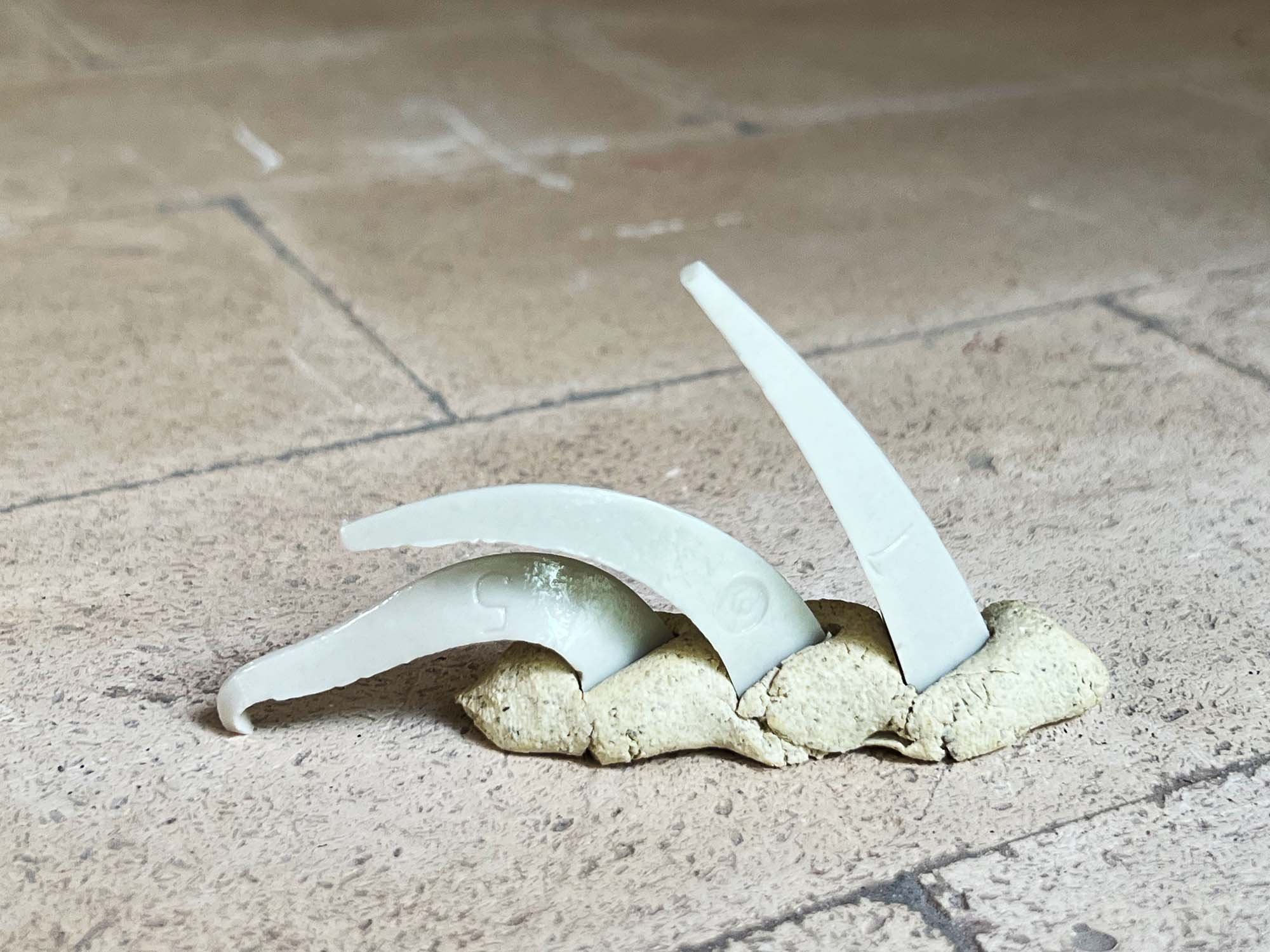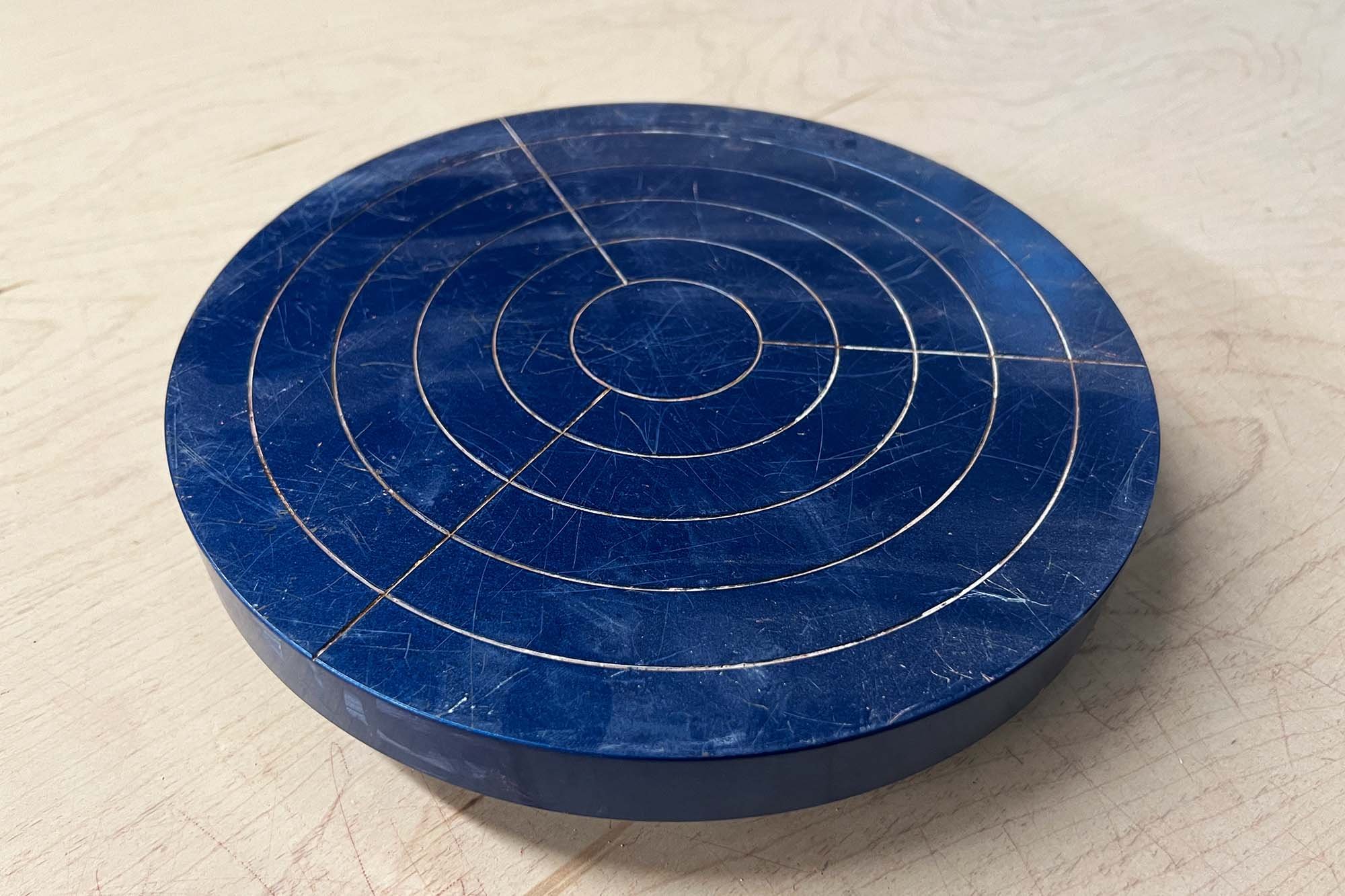The Liquid Underglaze (LUG) line from AMACO is an economical, quality option for ceramic underglazes. They can be easily color-mixed like paint with other underglazes or slips, and can be applied with a variety of tools including brushes, spray guns, sponges, or really any way you can think to get them to stick. They are also perfect for scraffito, stenciling, marbling, and other decorative techniques.
LUG underglazes are available in a variety of sizes, including 2oz jars, 16oz pints, and some colors come in gallon jugs. Expect to pay anywhere from $20 to $30 for a 16oz pint of underglaze. Yes, they can be a bit expensive but if anything, they are a bit cheaper than many similar colors in the AMACO Velvet Underglaze line. If you are unsure where to start, a great way to sample colors can be to buy a few 2 oz jars and test them out.
LUG underglazes are designed for cone 06-04 low fire underneath a low fire clear glaze, but most colors stay true at mid-range (cone 5-6) and high fire (cone 8-11). For best results, test in your kiln first. Below, I’ve posted images of LUG Underglazes fired at Cone 6 in oxidation on a speckled clay body, to illustrate what these colors look like underneath our favorite Glossy Clear and Milky Clear cone 6 mid-range glaze recipes. But they will also work great underneath a commercial clear glaze. Try them at high fire too, most colors will stay true.
To make a complete palette of colors, I use a mixture of AMACO Velvet Underglazes and Spectrum 500 series underglazes along with LUG underglazes. The LUG underglazes I’ve tested all stay true to color at cone 6, although some do begin to melt into satin or shiny glazes on their own. For more information about LUG Underglaze, check out AMACO’s site.
AMACO LUG Underglaze Cone 6 Test Tiles
All images show 1, 2, and 3 coats of underglaze painted on a speckled stoneware fired to cone 6 in oxidation. The left side of the tile shows Cone 6 Glossy Clear glaze on top, the middle section is unglazed, and the right side is Cone 6 Milky Clear glaze. As commercial underglazes are quite expensive, I like to pair them with economical clear glazes that are mixed from scratch.
AMACO LUG-1 Black Underglaze painted in 1, 2, and 3 coats on speckled stoneware fired at cone 6 in oxidation.
This is a very dark black that is similar to the AMACO Velvet Underglaze black.
AMACO LUG-10 White Underglaze painted in 1, 2, and 3 coats on speckled stoneware fired at Cone 6 in oxidation.
This is a bright white. To my eye, it is very similar to the Velvet Underglaze white.
AMACO LUG-15 Warm Gray Underglaze painted in 1, 2, and 3 coats on speckled stoneware fired at cone 6 in oxidation.
A kitten-gray option for underglaze.
AMACO LUG-22 Dark Blue Underglaze painted in 1, 2 and 3 coats on speckled stoneware fired to cone 6 in oxidation. At mid-range or higher, this underglaze will turn satin / glossy as shown in the middle unglazed section.
This is a deep, saturated blue/almost black that can turn a deep ultramarine under certain clear glazes.
AMACO LUG-25 Turquoise Underglaze painted in 1, 2, and 3 coats on speckled stoneware fired at cone 6 in oxidation.
This is a great option for a solid, opaque turquoise underglaze.
AMACO LUG-31 Mahogany Brown painted in 1, 2, and 3 coats on speckled stoneware fired to cone 6 in oxidation.
This is a rich, chocolate brown underglaze.
AMACO LUG-43 Dark Green Underglaze painted in 1, 2, and 3 coats on speckled stoneware fired to cone 6 in oxidation.
LUG-43 is an opaque forest green that is similar to a chrome oxide green.
AMACO LUG-50 Pink Underglaze painted in 1, 2, and 3 coats on speckled stoneware fired to cone 6 in oxidation.
This is the best pink underglaze that I have found. It is bright, opaque, and birthday-cake pink.
AMACO LUG-61 Bright Yellow Underglaze painted in 1, 2, and 3 coats on speckled stoneware fired to cone 6 in oxidation.
This is one of the brightest, most intense yellow underglazes on the market. And for some reason, the LUG Bright Yellow is much more economical than the similar yellows in the Velvet Underglaze line.
About Underglazes
Underglazes are the best way to get saturated, bright colors on your ceramics. Whether it is detailed, layered paintings or covering larger areas, underglazes are great for beginners, students, and experienced professionals. Not quite a slip and not quite a glaze, manufacturers generally mix underglazes with some sort of gum material that helps with brushability and getting the material to stick. That versatility allows them to be painted on leather hard greenware, bisqueware, and they will even stick on top of glaze for a refire.
Do you have a favorite underglaze? Let us know in the comments.




